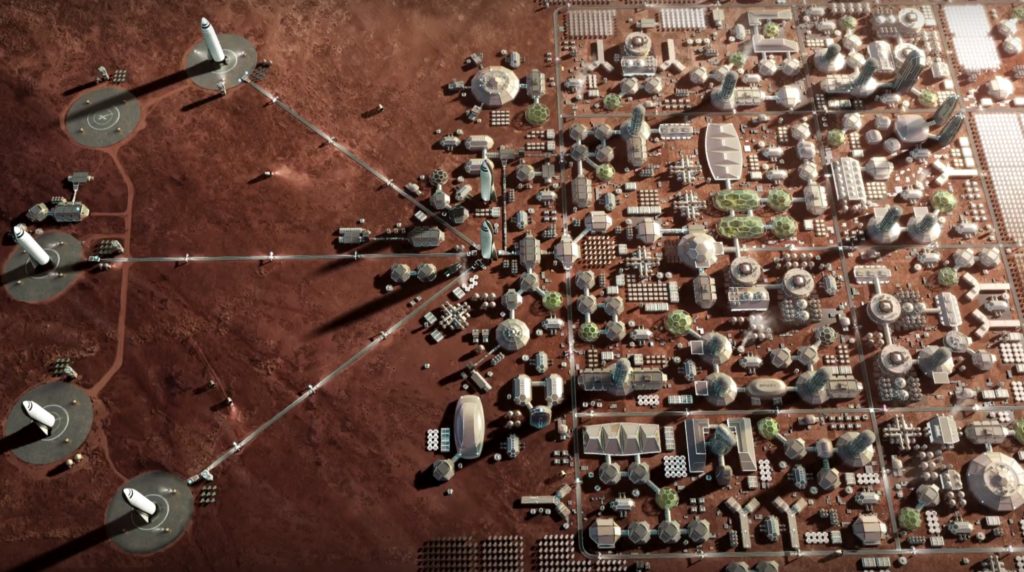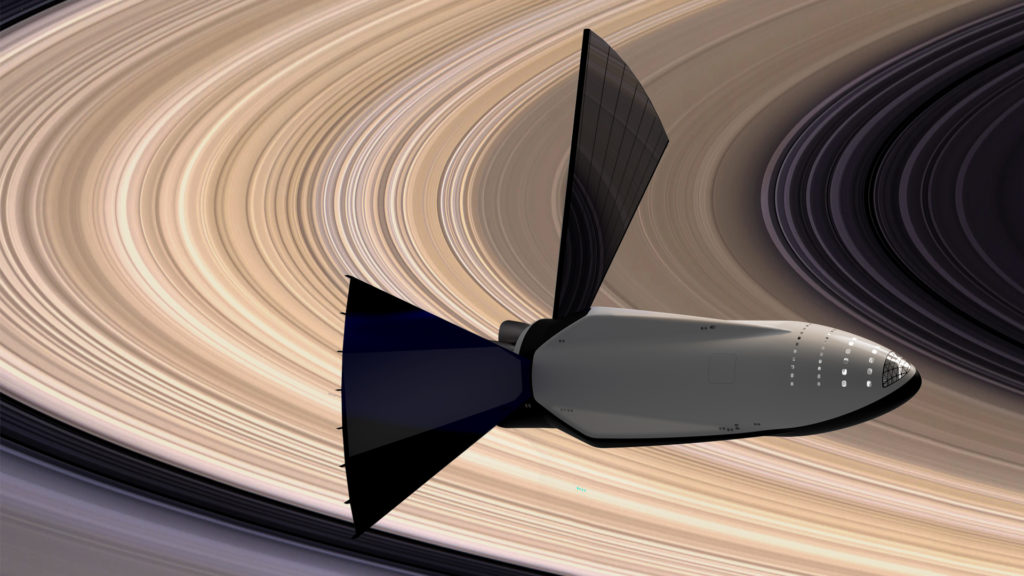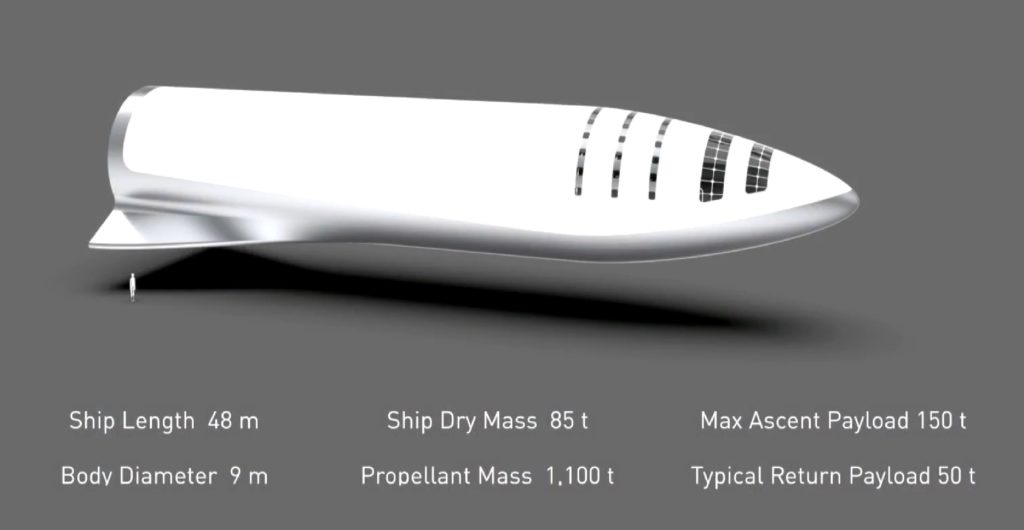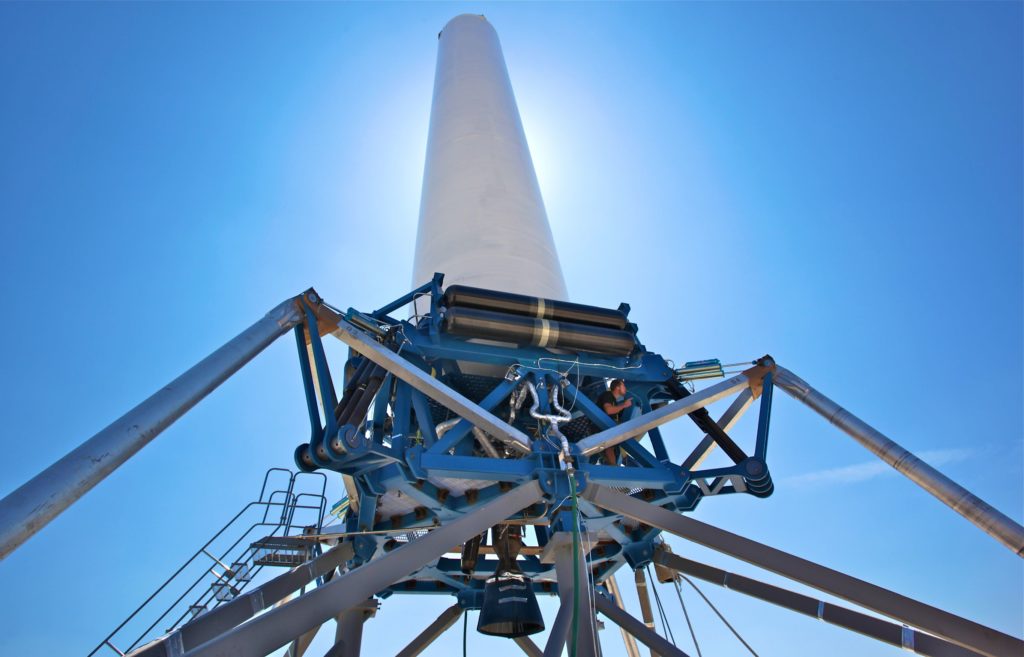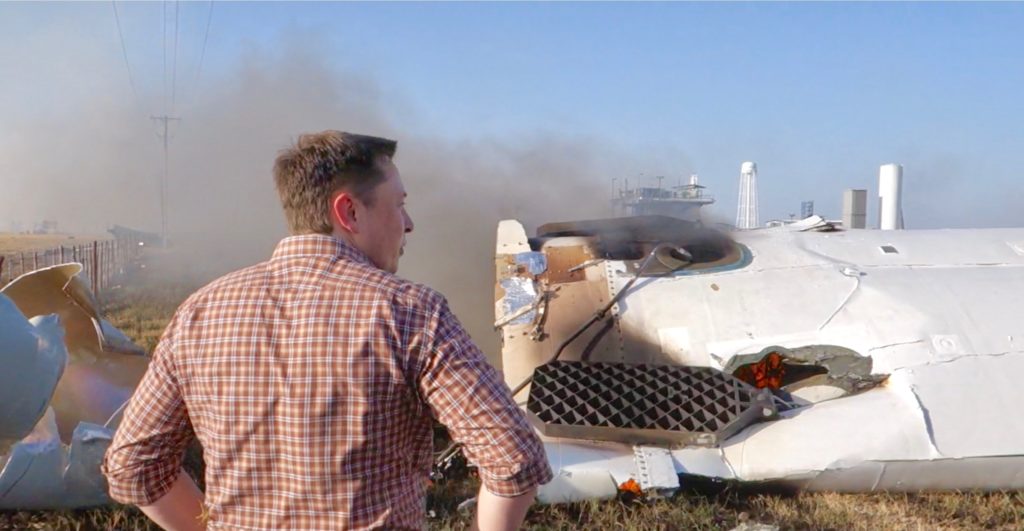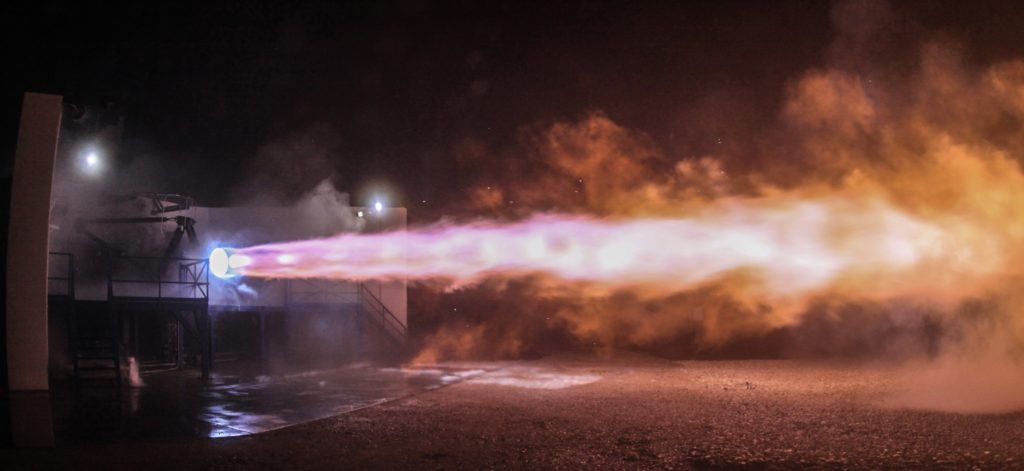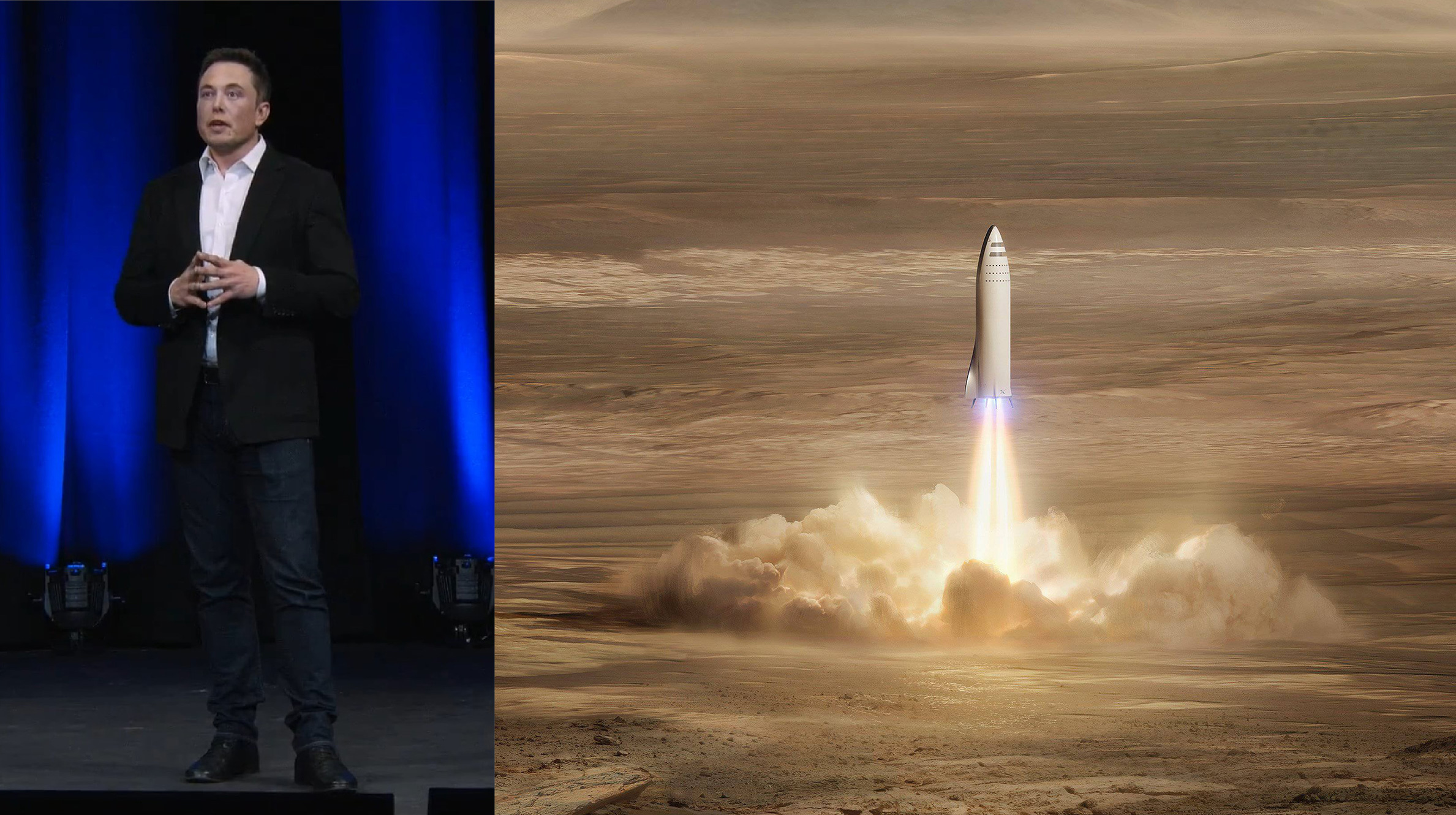

News
Elon Musk’s SpaceX AMA: Living on Mars, Spaceship Info, Timeline
SpaceX CEO Elon Musk hosted a Reddit AMA (Ask Me Anything) earlier this afternoon and spent several hours drinking whiskey, trolling the audience, answering some great questions, and generally having a blast. He revealed a vast array of fascinating new details about SpaceX’s giant new rocket (BFR), its upper stage spaceship (BFS), and much more.
All of Musk’s answers from the AMA have been collated and organized by category below. You’ll want to shy away from the AMA page itself, currently clocking in at more 10,000 comments.
When useful, particularly dense and technical responses have been summarized in italics for a broader audience.
Living on Mars
Q: Obviously there will be an extreme amount of care put into what is sent on the first missions, and the obvious answer of “Solar Panels” and “Fuel Production Equipment” is included, but what else?
A (Elon): Our goal is get you there and ensure the basic infrastructure for propellant production and survival is in place. A rough analogy is that we are trying to build the equivalent of the transcontinental railway. A vast amount of industry will need to be built on Mars by many other companies and millions of people.
Q: Does your Mars city feature permanently anchored BFS spaceships?
A (Elon): Wouldn’t read too much into that illustration
Q: Have any candidate landing sites for the Mars base been identified?
A (Elon): Landing site needs to be low altitude to maximize aero braking, be close to ice for propellant production and not have giant boulders. Closer to the equator is better too for solar power production and not freezing your ass off.
Q: Who will design and build the ISRU system for the propellant depot, and how far along is it?
A (Elon): SpaceX. Design is pretty far along. It’s a key part of the whole system.
Without ISRU (In-Situ Resource Utilization), BFS is unlikely to ever be able to take humans to Mars affordably enough to enable large colonies. This news is thus of huge importance, and suggests that SpaceX will be able to focus on developing BFR and BFS near-term.

Another hypothetical SpaceX city on Mars. Bases will need to be located near water resources. (SpaceX)
SpaceX Big F** Spaceship (BFS)
Q: Will the BFS landing propellants have to be actively cooled on the long trip to Mars?
A (Elon): The main tanks will be vented to vacuum, the outside of the ship is well insulated (primarily for reentry heating) and the nose of the ship will be pointed mostly towards the sun, so very little heat is expected to reach the header tanks. That said, the propellant can be cooled either with a small amount of evaporation. Down the road, we might add a cryocooler.
A (Elon): exactly (while methane could be kept in its liquid form solely through high pressure storage, the pressures required are immense and would require tanks that would be far too heavy for a rocket’s second stage.
Cold liquid oxygen and methane will unavoidably warm up over time, eventually returning to their gaseous forms if allowed. SpaceX’s solution for BFS, which will spend several months between Earth and Mars, is to rely on the Ship’s already great insulation, as well as minimal evaporative cooling (similar to how swamp coolers work).
Q: Will the BFS heat shield be mounted on the skin, or embedded?
A (Elon): The heat shield plates will be mounted directly to the primary tank wall. That’s the most mass efficient way to go. Don’t want to build a box in box.

Dragon 2’s PICA-X heat shield can be seen on the right. BFS’s heat shield will be made of the same material, albeit on a much larger scale. (SpaceX)
Q: Can the BFS delta wings and heat shield be removed for deep space missions?
A (Elon): Wouldn’t call what BFS has a delta wing. It is quite small (and light) relative to the rest of the vehicle and is never actually used to generate lift in the way that an aircraft wing is used.
Its true purpose is to “balance out” the ship, ensuring that it doesn’t enter engines first from orbit (that would be really bad), and provide pitch and yaw control during reentry.
Q: Why is the 2017 BFS spaceship largely cylindrical?
A (Elon): Best mass ratio is achieved by not building a box in a box. The propellant tanks need to be cylindrical to be remotely mass efficient and they have to carry ascent load, so lowest mass solution is just to mount the heat shield plates directly to the tank wall.
For a rocket, mass ratio refers to its weight with a full load of propellant divided by its weight while completely empty. The lighter a rocket’s structure, the more mass it can lift into a given orbit.
- SpaceX’s conceptual Interplanetary Transport System from 2016 was considerably larger and more structurally complex than 2017’s BFR. (SpaceX)
- The relatively cylindrical BFS reduces complexity and lowers weight. (SpaceX)
Q: How does the BFS achieve vertical stabilization, without a tail?
A (Elon): Tails are lame
A (Elon): +1 (The space shuttle’s vertical stabilizer was completely useless for most of the reentry profile, as it was in complete aerodynamic shadow. I think it’s clear a craft doesn’t need one for reentry, only for subsonic gliding, which BFS doesn’t really do.)
BFS doesn’t need a tail because tails add weight, are of little use during orbital reentry, and BFS is not intended to glide.
Q: Why was the number of BFS landing legs increased from 3 to 4?
A (Elon): Because 4
A (Elon): Improves stability in rough terrain
Q: How is the radiation shielding in the ITS?
A (Elon): Ambient radiation damage is not significant for our transit times. Just need a solar storm shelter, which is a small part of the ship. Buzz Aldrin is 87.
While radiation fearmongers may balk at this statement, it is to some extent true. The risks from radiation (PDF) for a six month journey in deep space are approximately similar to several dozen CT scans, while two years spent on the surface of Mars with little to no shielding would result in about the same amount of exposure. Underground habitats could alleviate a considerable amount of the risk from living on Mars’ surface.
The issues and dangers posed by radiation ought not be trivialized but they can be dealt with, particularly if BFR can deliver massive payloads to the planet.
Q: Why was the location and shape of the BFS header/landing tanks changed?
A (Elon): The aspiration by the change was to avoid/minimize plumbing hell, but we don’t super love the current header tank/plumbing design. Further refinement is likely.
Header tanks refer to smaller tanks contained within the main propellant tanks that are used to ignite engines in microgravity. It’s easier to pressurize or simply fill the smaller tanks than it is to do so with the massive main tanks.
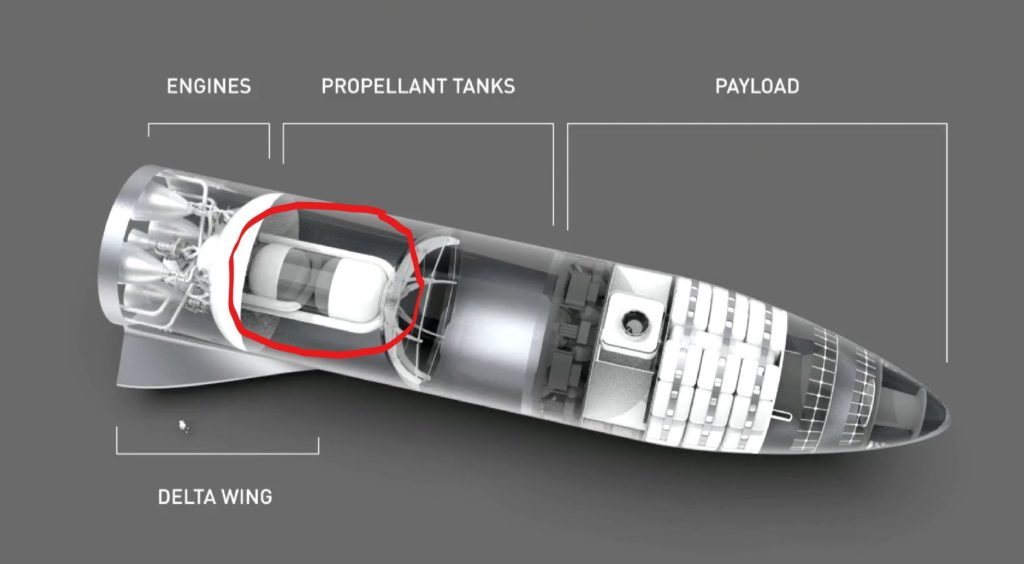
BFS’ header tanks circled in red. (SpaceX)
BFS Tanker
Q: Will the BFS tanker’s payload section be empty, or include extra propellant tanks?
A (Elon): At first, the tanker will just be a ship with no payload. Down the road, we will build a dedicated tanker that will have an extremely high full to empty mass ratio (warning: it will look kinda weird).
Using one version of the BFS as both a tanker and ship will streamline the initial development process for the rocket.
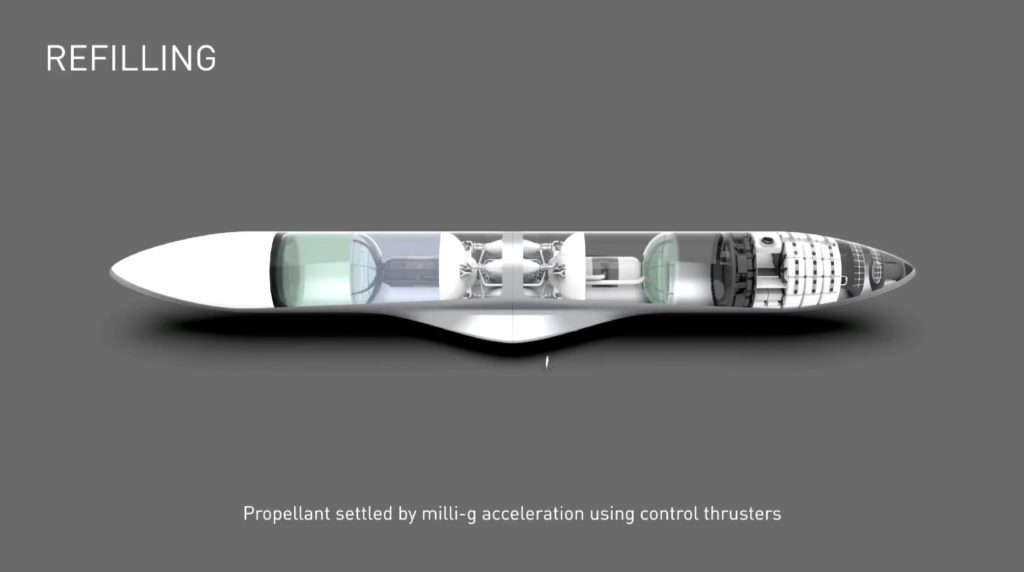
Two Spaceships docked for refuelling. (SpaceX)
Q: Will the BFS tanker ships (have to) do a hoverslam landing?
A (Elon): Landing will not be a hoverslam, depending on what you mean by the “slam” part. Thrust to weight of 1.3 will feel quite gentle. The tanker will only feel the 0.3 part, as gravity cancels out the 1. Launch is also around 1.3 T/W, so it will look pretty much like a launch in reverse….
BFS will land relatively gently, and BFR’s liftoff will also be gentle.
Development schedule
Q: With the first two cargo missions scheduled to land on Mars in 2022, what kind of development progress can we expect to see from SpaceX in the next 5 or so years leading up to the maiden flight?
Will we see BFS hops or smaller test vehicles similar to Grasshopper/F9R-Dev? Facilities being built? Propellant plant testing? etc. etc.
A (Elon): A lot. Yes, yes, and yes.
A (Elon): Will be starting with a full-scale Ship doing short hops of a few hundred kilometers altitude and lateral distance. Those are fairly easy on the vehicle, as no heat shield is needed, we can have a large amount of reserve propellant and don’t need the high area ratio, deep space Raptor engines.
Next step will be doing orbital velocity Ship flights, which will need all of the above. Worth noting that BFS is capable of reaching orbit by itself with low payload, but having the BF Booster increases payload by more than an order of magnitude. Earth is the wrong planet for single stage to orbit. No problemo on Mars.
The first real tests of the BFR will be done by hopping a full-scale BFS “several hundred kilometers”. BFS is capable of launching itself and a tiny payload into orbit, but the utility is limited on Earth. On Mars, BFS will be far more capable as a single stage to orbit (SSTO) launch vehicle.
- F9R-dev, used to test vertical take off and landing for Falcon 9. BFR will go through a similar program with its spaceship upper stage prior to orbital missions. (Steve Jurvetson)
- F9R sadly suffered a software bug and self-destructed in 2014, but SpaceX had already learned most of what it needed to begin Falcon 9 recoveries. (Steve Jurvetson)
Raptor and rocket propulsion
Q: Why was Raptor thrust reduced from ~300 tons-force to ~170 tons-force?
A (Elon): We chickened out. The engine thrust dropped roughly in proportion to the vehicle mass reduction from the first IAC talk. In order to be able to land the BF Ship with an engine failure at the worst possible moment, you have to have multiple engines. The difficulty of deep throttling an engine increases in a non-linear way, so 2:1 is fairly easy, but a deep 5:1 is very hard. Granularity is also a big factor. If you just have two engines that do everything, the engine complexity is much higher and, if one fails, you’ve lost half your power. Btw, we modified the BFS design since IAC to add a third medium area ratio Raptor engine partly for that reason (lose only 1/3 thrust in engine out) and allow landings with higher payload mass for the Earth to Earth transport function.
The Raptor engine’s maximum thrust has been decreased mainly because the size of the rocket decreased, from 12m to 9m in diameter. For redundancy’s sake, SpaceX has added a third central engine to the spaceship, versus the two engines mentioned at the 2017 IAC.
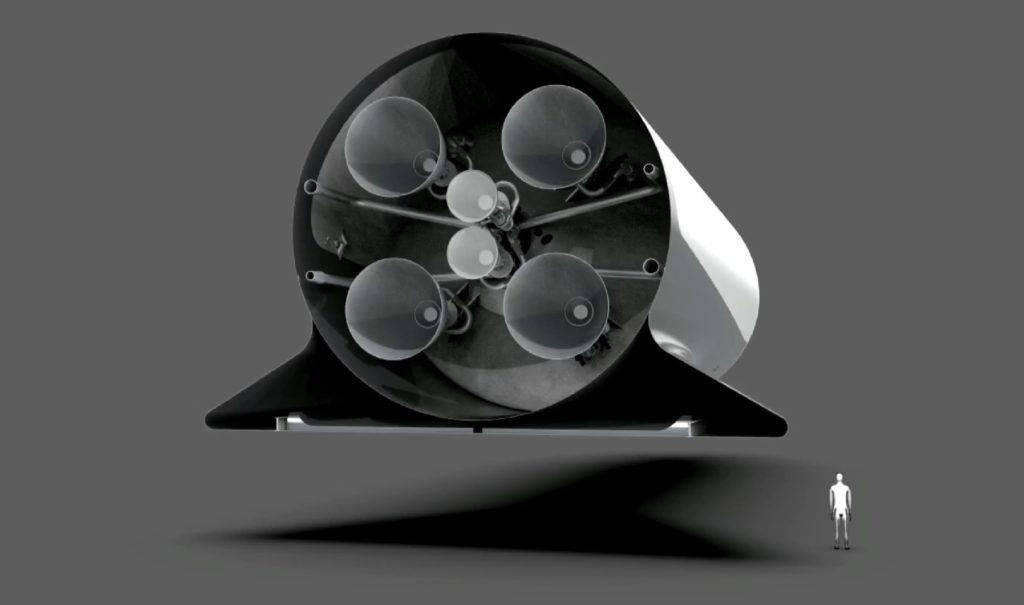
BFS’ delta “wings” from the rear of the ship. Also shown are the Raptors, with the two in the center now reportedly expanded to three engines. (SpaceX)
Q: Will the BFR autogenous pressurization system be heat exchanger based?
A (Elon): We plan to use the Incendio spell from Harry Potter
A (Elon): But, yes and probably
Autogenous pressurization refers to the method of propellant tank pressurization used. In microgravity conditions, tanks must be pressurized to keep fuel flowing to the engines and to improve the density of the fuel. While Falcon 9 currently uses high-pressure helium, ITS and now BFR have been designed to use the actual propellant in their tanks (methane and oxygen) for pressurization. This reduces the number of failure modes on BFR and improves the spaceship’s payload capabilities.
Q: Will the BFS methalox control thrusters be derived from Raptor or from SuperDraco engines?
A (Elon): The control thrusters will be closer in design to the Raptor main chamber than SuperDraco and will be pressure-fed to enable lowest possible impulse bit (no turbopump spin delay).
Like Falcon 9, BFR will need gas thrusters (RCS, reaction control system) to control its orientation (and refuel) while in microgravity conditions. While Falcon uses cold nitrogen gas thrusters, BFR will utilize the propellant it is already carrying for Raptor, methane and oxygen. Again, the goal of this is to reduce complexity.
Q: Could you update us on the status of scaling up the Raptor prototype to the final size?
A (Elon): Thrust scaling is the easy part. Very simple to scale the dev Raptor to 170 tons.
The flight engine design is much lighter and tighter, and is extremely focused on reliability. The objective is to meet or exceed passenger airline levels of safety. If our engine is even close to a jet engine in reliability, has a flak shield to protect against a rapid unscheduled disassembly and we have more engines than the typical two of most airliners, then exceeding airline safety should be possible.
That will be especially important for point to point journeys on Earth. The advantage of getting somewhere in 30 mins by rocket instead of 15 hours by plane will be negatively affected if “but also, you might die” is on the ticket.
SpaceX’s subscale Raptor, the one seen in videos and photos of it firing, is understood to be a bit more than half the size of the operational engine described at IAC 2017. Increasing the scale of the engine is not the difficult aspect of development. Rather, optimization, weight reduction, and extreme reusability are the main sources of difficulty needed before Raptor is flight-ready. This reusability is central to the goal of reliable and rapid reuse of orbital-class rockets.
- SpaceX revealed this stunning photo of Raptor’s first (partial) hot-fire test the night before Musk’s talk at Guadalajara. (SpaceX)
- SpaceX’s subscale Raptor engine has completed more than 1200 seconds of testing in less than two years. (SpaceX)
Q: Can BFS vacuum-Raptors be fired at sea level pressure?
A: The “vacuum” or high area ratio Raptors can operate at full thrust at sea level. Not recommended.
Put simply, vacuum nozzles do not like to operate in an atmosphere.
Mars communications
Q: Does SpaceX have any interest in putting more satellites in orbit around Mars (or even rockets) for internet/communications before we get feet on the ground? Or are the current 5-6 active ones we have there sufficient?
A (Elon): Yes
Q: Also will there be some form of an internet or communications link with Earth? Is SpaceX going to be in charge of putting this in or are you contracting some other companies?
A (Elon): If anyone wants to build a high bandwidth comm link to Mars, please do.
Taken side by side, this likely indicates that SpaceX will develop a high-bandwidth Mars-Earth communications link if nobody else does, but that they would logical prefer that someone else builds that infrastructure beforehand.
Q: The concept of an internet connection on Mars is kinda awesome. You could theoretically make an internet protocol that would mirror a subset of the internet near Mars. A user would need to queue up the parts of the internet they wanted available and the servers would sync the relevant data.
A (Elon): Nerd
A (Elon): But, yes, it would make sense to strip the headers out and do a UDP-style feed with extreme compression and a CRC check to confirm the packet is good, then do a batch resend of the CRC-failed packets. Something like that. Earth to Mars is over 22 light-minutes at max distance.
A (Elon): 3 light-minutes at closest distance. So you could Snapchat, I suppose. If that’s a thing in the future.
The communication delay between Earth and Mars (at least several minutes one-way) will prevent any Martian habitats from simply integrating with Earth’s Internet. The delay will require some sort of mediation. As an example, a user on Mars could select the websites they want to browse or videos they want to watch beforehand, and they would be available between several minutes and an hour later.

SpaceX’s Starlink satellite constellation efforts could provide the company with valuable experience that can be applied around Mars. (unofficial logo by Eric Ralph)
Boring!
Q: Boring question about Mars:
A (Elon): More boring!
Miscellaneous silliness
Q: This is one bizarre AMA so far…
A (Elon): Just wait…
Q: i feel like thats a threat. “just wait. it will get way more bizarre than that. let me finish my whiskey”
A (Elon): How did you know? I am actually drinking whiskey right now. Really.
…No comment…
All things considered, this was a wildly successful AMA. Elon clearly had a whole lot of fun, the audience got lightheartedly trolled, and SpaceX fans will undoubtedly be chewing over the technical details he elucidated for weeks to come. Special thanks are owed to the subreddit /r/SpaceX and user /u/_Rocket_, who together managed to flood the AMA with an array of intelligent, pointed, and reasonable questions, at least ten of which were answered by Musk.
News
Tesla begins Robotaxi certification push in Arizona: report
Tesla seems serious about expanding its Robotaxi service to several states in the coming months.

Tesla has initiated discussions with Arizona transportation regulators to certify its driverless Robotaxi service in the state, as per a recent report from Bloomberg News. The move follows Tesla’s launch of its Robotaxi pilot program in Austin, Texas, as well as CEO Elon Musk’s recent comments about the service’s expansion in the Bay Area.
The Arizona Department of Transportation confirmed to Bloomberg that Tesla has reached out to begin the certification process for autonomous ride-sharing operations in the state. While details remain limited, the outreach suggests that Tesla is serious about expanding its driverless Robotaxi service to several territories in the coming months.
The Arizona development comes as Tesla prepares to expand its service area in Austin this weekend, as per CEO Elon Musk in a post on X. Musk also stated that Tesla is targeting the San Francisco Bay Area as its next major market, with a potential launch “in a month or two,” pending regulatory approvals.
Tesla first launched its autonomous ride-hailing program on June 22 in Austin with a small fleet of Model Y vehicles, accompanied by a Tesla employee in the passenger seat to monitor safety. While still classified as a test, Musk has said the program will expand to about 1,000 vehicles in the coming months. Tesla will later upgrade its Robotaxi fleet with the Cyercab, a two-seater that is designed without a steering wheel.
Sightings of Cybercab castings around the Giga Texas complex suggests that Tesla may be ramping the initial trial production of the self-driving two-seater. Tesla, for its part, has noted in the past that volume production of the Cybercab is expected to start sometime next year.
In California, Tesla has already applied for a transportation charter-party carrier permit from the state’s Public Utilities Commission. The company is reportedly taking a phased approach to operating in California, with the Robotaxi service starting with pre-arranged rides for employees in vehicles with safety drivers.
News
Tesla sets November 6 date for 2025 Annual Shareholder Meeting
The automaker announced the date on Thursday in a Form 8-K.

Tesla has scheduled its 2025 annual shareholder meeting for November 6, addressing investor concerns that the company was nearing a legal deadline to hold the event.
The automaker announced the date on Thursday in a Form 8-K submitted to the United States Securities and Exchange Commission (SEC). The company also listed a new proposal submission deadline of July 31 for items to be included in the proxy statement.
Tesla’s announcement followed calls from a group of 27 shareholders, including the leaders of large public pension funds, which urged Tesla’s board to formally set the meeting date, as noted in a report from The Wall Street Journal.
The group noted that under Texas law, where Tesla is now incorporated, companies must hold annual meetings within 13 months of the last one if requested by shareholders. Tesla’s previous annual shareholder meeting was held on June 13, 2024, which placed the July 13 deadline in focus.
Tesla originally stated in its 2024 annual report that it would file its proxy statement by the end of April. However, an amended filing on April 30 indicated that the Board of Directors had not yet finalized a meeting date, at least at the time.
The April filing also confirmed that Tesla’s board had formed a special committee to evaluate certain matters related to CEO Elon Musk’s compensation plan. Musk’s CEO performance award remains at the center of a lengthy legal dispute in Delaware, Tesla’s former state of incorporation.
Due to the aftermath of Musk’s legal dispute about his compensation plan in Delaware, he has not been paid for his work at Tesla for several years. Musk, for his part, has noted that he is more concerned about his voting stake in Tesla than his actual salary.
At last year’s annual meeting, TSLA shareholders voted to reapprove Elon Musk’s compensation plan and ratified Tesla’s decision to relocate its legal domicile from Delaware to Texas.
Elon Musk
Grok coming to Tesla vehicles next week “at the latest:” Elon Musk
Grok’s rollout to Tesla vehicles is expected to begin next week at the latest.

Elon Musk announced on Thursday that Grok, the large language model developed by his startup xAI, will soon be available in Tesla vehicles. Grok’s rollout to Tesla vehicles is expected to begin next week at the latest, further deepening the ties between the two Elon Musk-led companies.
Tesla–xAI synergy
Musk confirmed the news on X shortly after livestreaming the release of Grok 4, xAI’s latest large language model. “Grok is coming to Tesla vehicles very soon. Next week at the latest,” Musk wrote in a post on social media platform X.
During the livestream, Musk and several members of the xAI team highlighted several upgrades to Grok 4’s voice capabilities and performance metrics, positioning the LLM as competitive with top-tier models from OpenAI and Google.
The in-vehicle integration of Grok marks a new chapter in Tesla’s AI development. While Tesla has long relied on in-house systems for autonomous driving and energy optimization, Grok’s integration would introduce conversational AI directly into its vehicles’ user experience. This integration could potentially improve customer interaction inside Tesla vehicles.
xAI and Tesla’s collaborative footprint
Grok’s upcoming rollout to Tesla vehicles adds to a growing business relationship between Tesla and xAI. Earlier this year, Tesla disclosed that it generated $198.3 million in revenue from commercial, consulting, and support agreements with xAI, as noted in a report from Bloomberg News. A large portion of that amount, however, came from the sale of Megapack energy storage systems to the artificial intelligence startup.
In July 2023, Musk polled X users about whether Tesla should invest $5 billion in xAI. While no formal investment has been made so far, 68% of poll participants voted yes, and Musk has since stated that the idea would be discussed with Tesla’s board.
-

 Elon Musk1 week ago
Elon Musk1 week agoTesla investors will be shocked by Jim Cramer’s latest assessment
-

 Elon Musk3 days ago
Elon Musk3 days agoElon Musk confirms Grok 4 launch on July 9 with livestream event
-

 Elon Musk13 hours ago
Elon Musk13 hours agoxAI launches Grok 4 with new $300/month SuperGrok Heavy subscription
-

 News7 days ago
News7 days agoTesla Model 3 ranks as the safest new car in Europe for 2025, per Euro NCAP tests
-

 Elon Musk2 weeks ago
Elon Musk2 weeks agoA Tesla just delivered itself to a customer autonomously, Elon Musk confirms
-

 Elon Musk1 week ago
Elon Musk1 week agoxAI’s Memphis data center receives air permit despite community criticism
-

 Elon Musk2 weeks ago
Elon Musk2 weeks agoTesla’s Omead Afshar, known as Elon Musk’s right-hand man, leaves company: reports
-

 News2 weeks ago
News2 weeks agoXiaomi CEO congratulates Tesla on first FSD delivery: “We have to continue learning!”

